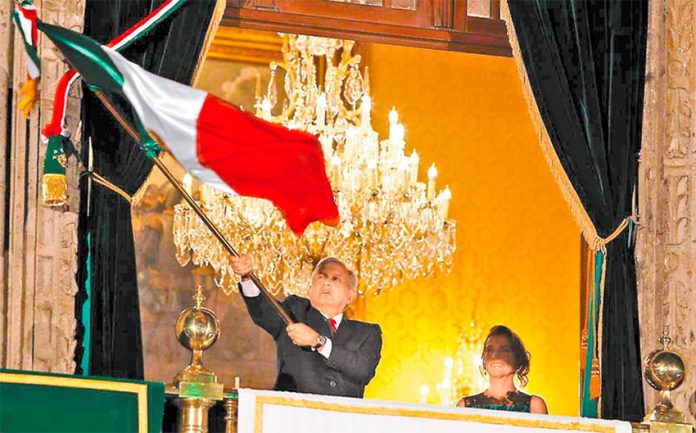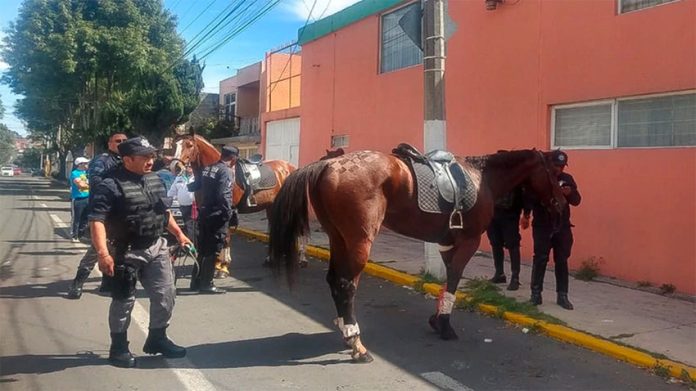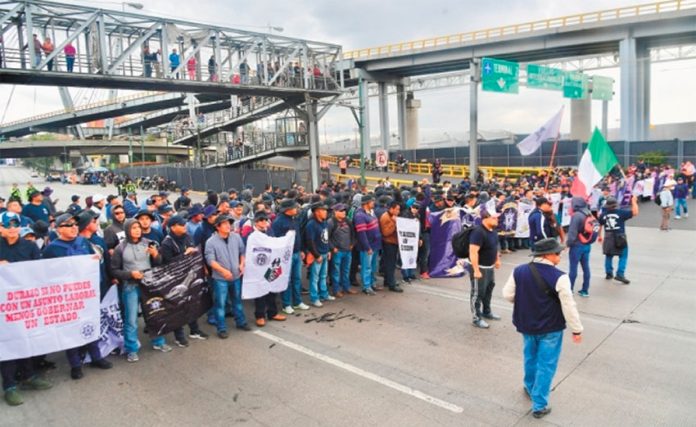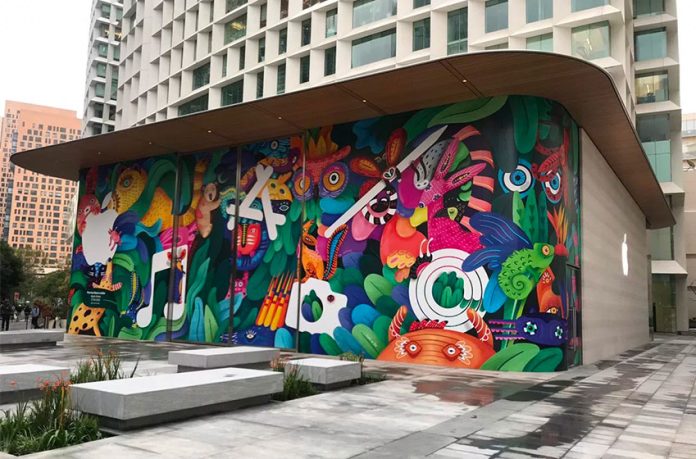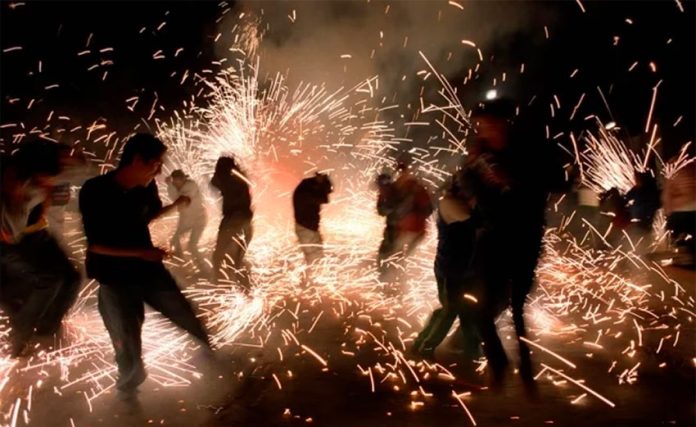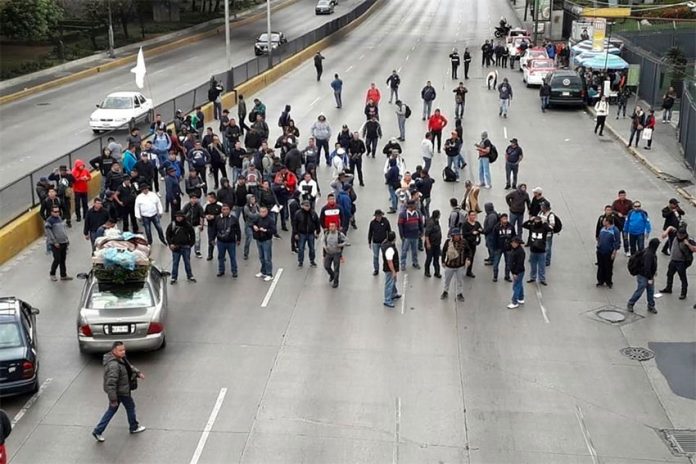In front of more than 130,000 revelers in Mexico City’s central square on Sunday night, President López Obrador gave his first cry of independence as the nation’s head of state.
From the presidential balcony of the National Palace, López Obrador delivered a total of 20 “vivas,” all of which were reciprocated enthusiastically by the thousands of patriots gathered in the zócalo.
Five independence heroes, the nation’s mothers and fathers, anonymous heroes, the heroic people of Mexico, indigenous communities, liberty, justice, democracy, sovereignty, universal fraternity, peace, the cultural grandeur of Mexico and independence itself were all wished “long life” by the president before he concluded the ceremony with the traditional thrice-repeated refrain of “¡viva México!”
Unlike in previous years, the ceremony wasn’t marked by ostentation or used as a photo opportunity by the president’s family.
López Obrador was accompanied only by his wife, Beatriz Gutiérrez Müller, as he delivered El Grito de Dolores, while his three adult sons and their partners, along with the president’s fourth son, 11-year-old Jesús Ernesto, watched proceedings from a National Palace balcony far removed from the focus of attention.
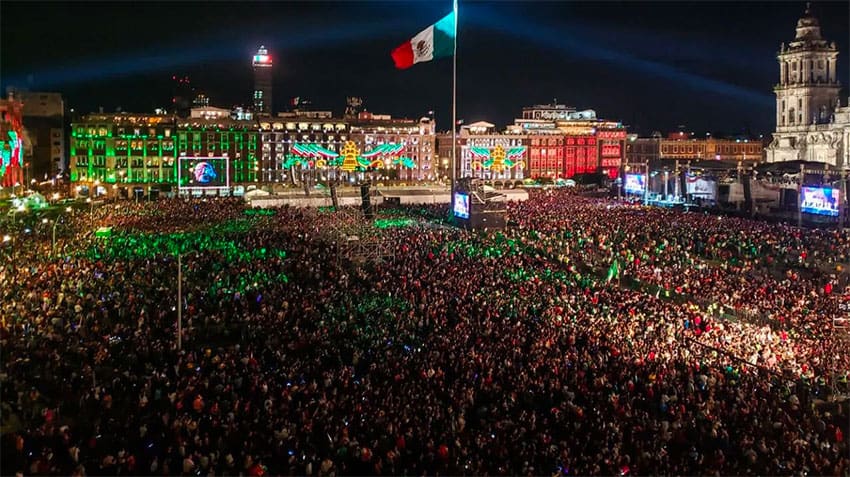
While former president Enrique Peña Nieto, his then-wife Angélica Rivera and their children were applauded by hundreds of invited guests as they made their way to the presidential balcony for last year’s ceremony, López Obrador’s almost 500 guests were nowhere to be seen as cameras followed him and Gutiérrez through the National Palace.
In fact, the president’s guests weren’t even afforded the privilege of witnessing the ceremony live, watching it instead on a large screen set up in the patio of the National Palace.
Members of López Obrador’s cabinet weren’t seen until the elaborate fireworks display that followed the formal ceremony was underway.
Foreign Affairs Secretary Marcelo Ebrard and Finance Secretary Arturo Herrera were among the officials who watched the pyrotechnics from balconies dotted along the façade of the seat of executive power.
For the thousands of proud Mexicans who flocked to the capital’s downtown for last night’s festivities, getting into the zócalo was less arduous than it has been in the past. Only minimal security checks were carried out by police, who patrolled the central square and nearby streets in massive numbers.
Military personnel dressed in civilian clothes mixed with the revelers in the zócalo to ensure people’s safety but went unnoticed, the newspaper Milenio reported, because they weren’t required to eject or arrest any troublemakers.

Celebrations marking the 209th anniversary of the beginning of the Mexican War of Independence continue across the country on Monday.
In Mexico City, 50 airplanes and 22 helicopters will accompany a military parade through downtown streets. For the first time in Mexican history, two women will be among the Air Force pilots who fly the planes over the historic center of the nation’s capital.
Source: Milenio (sp)
